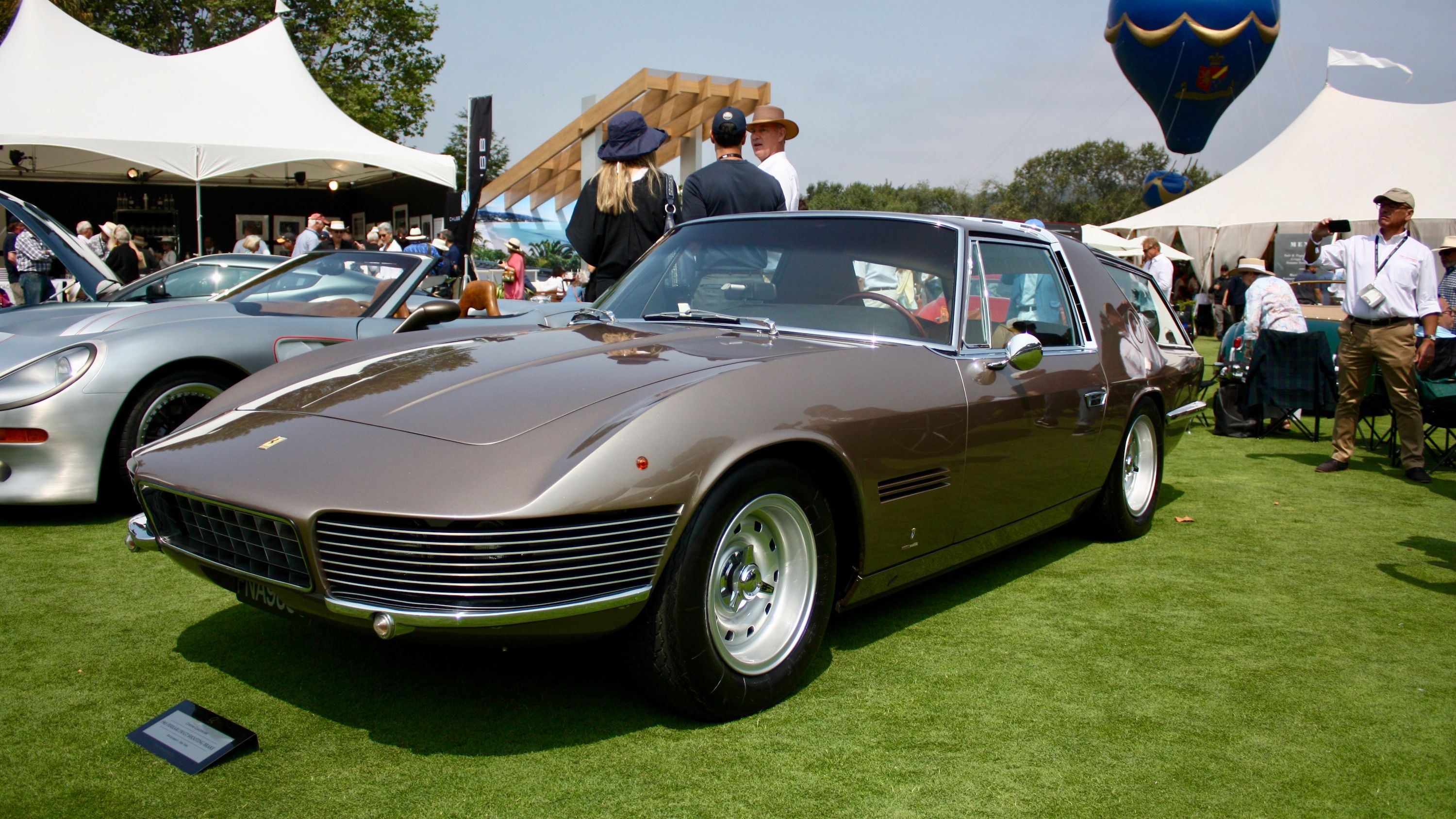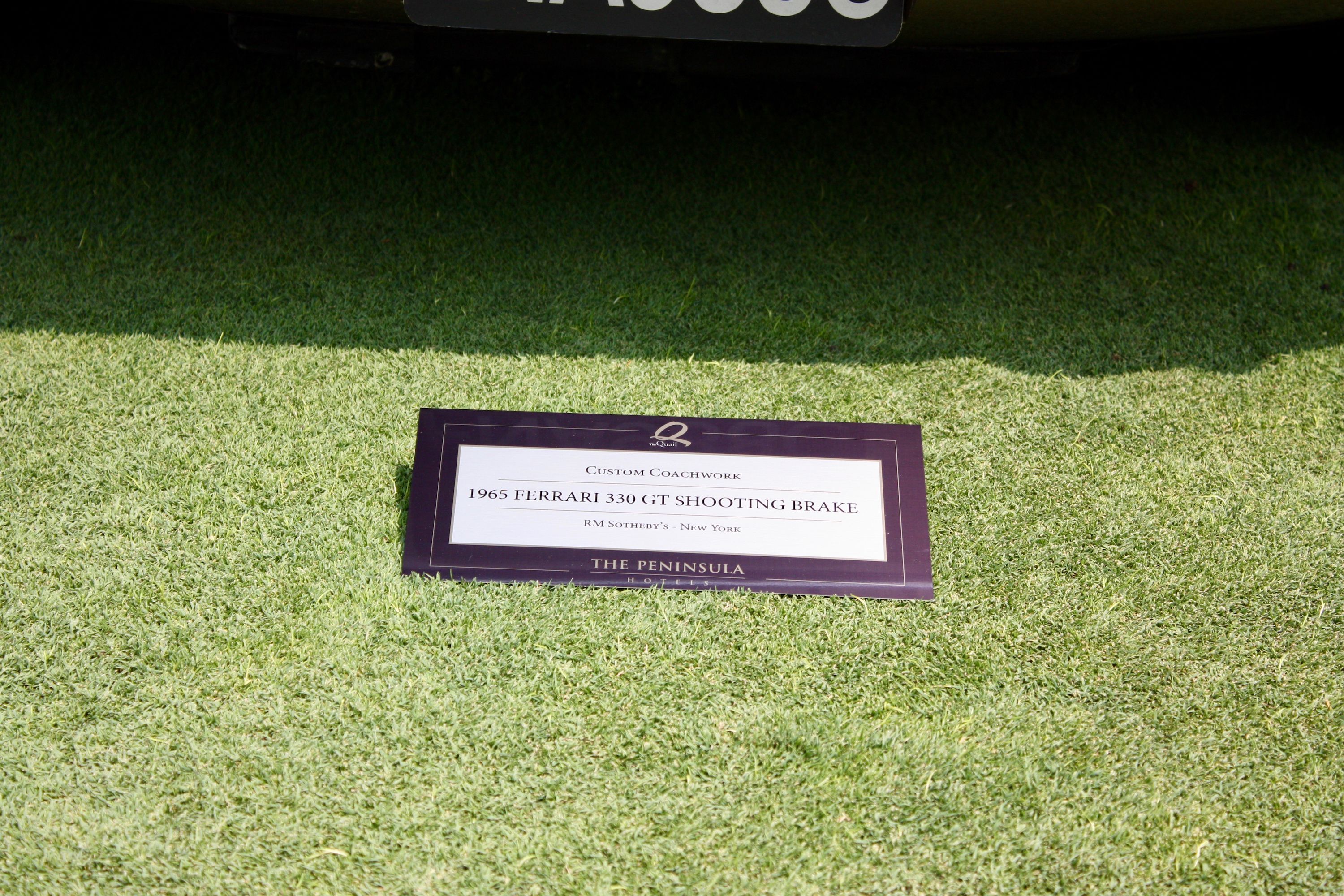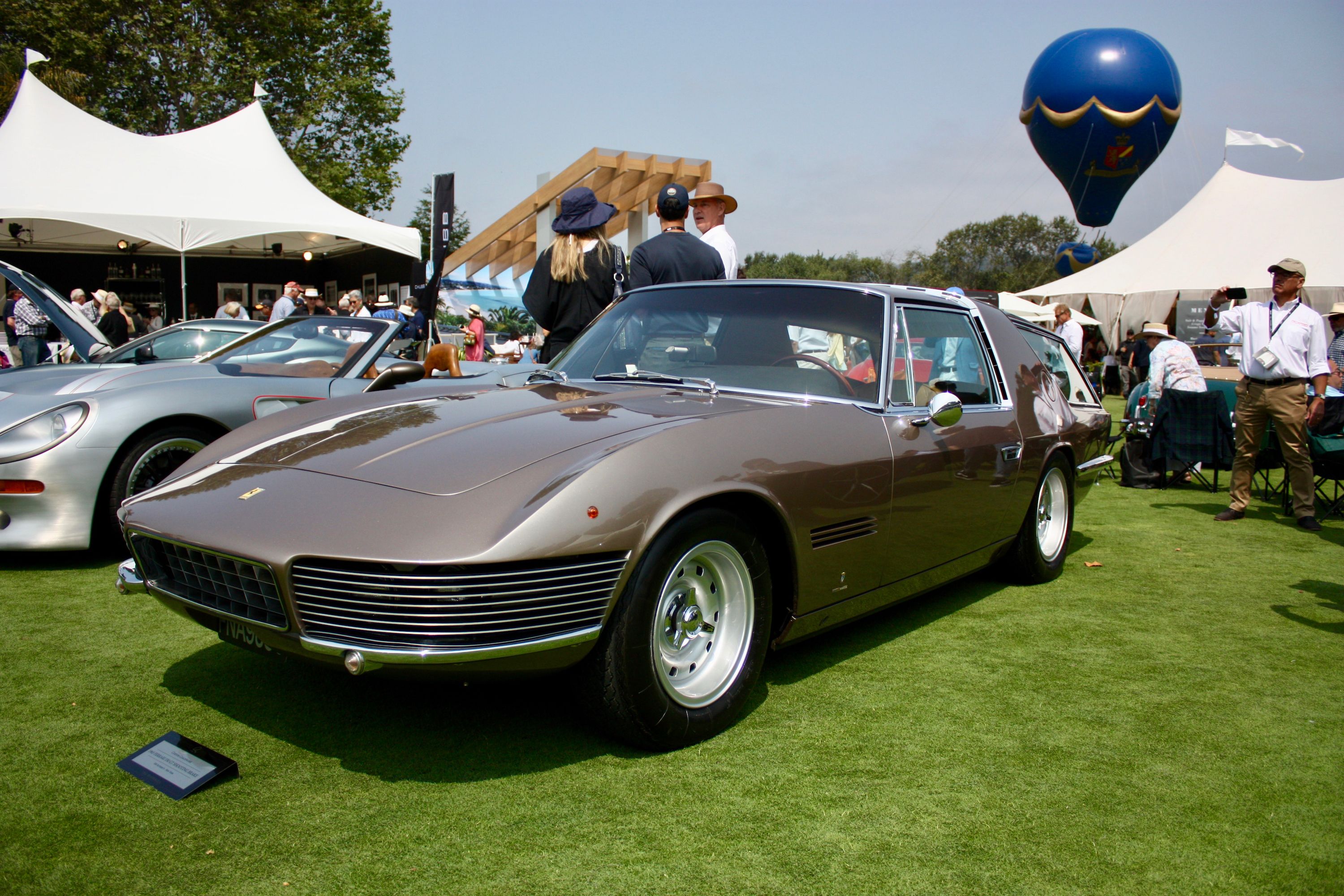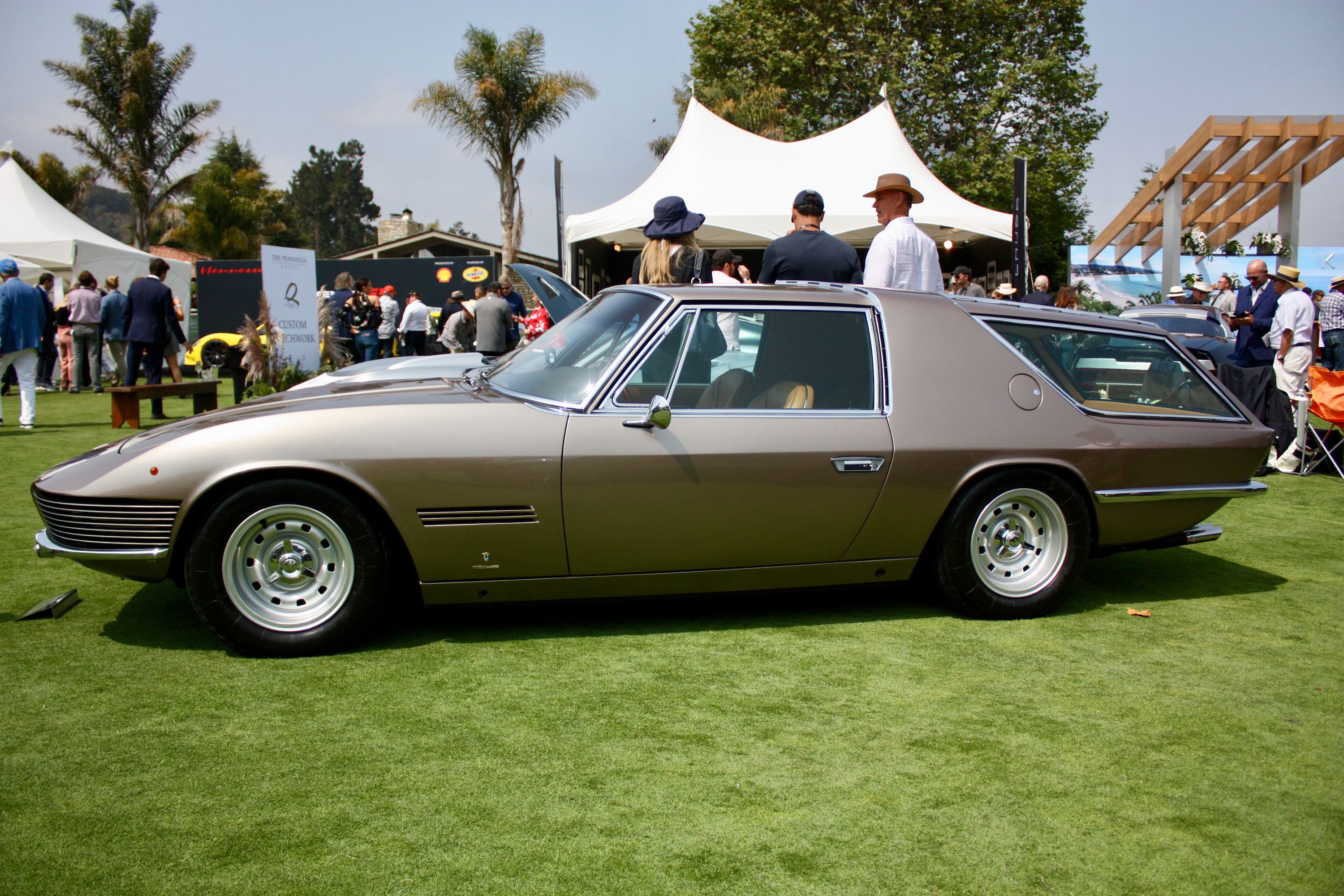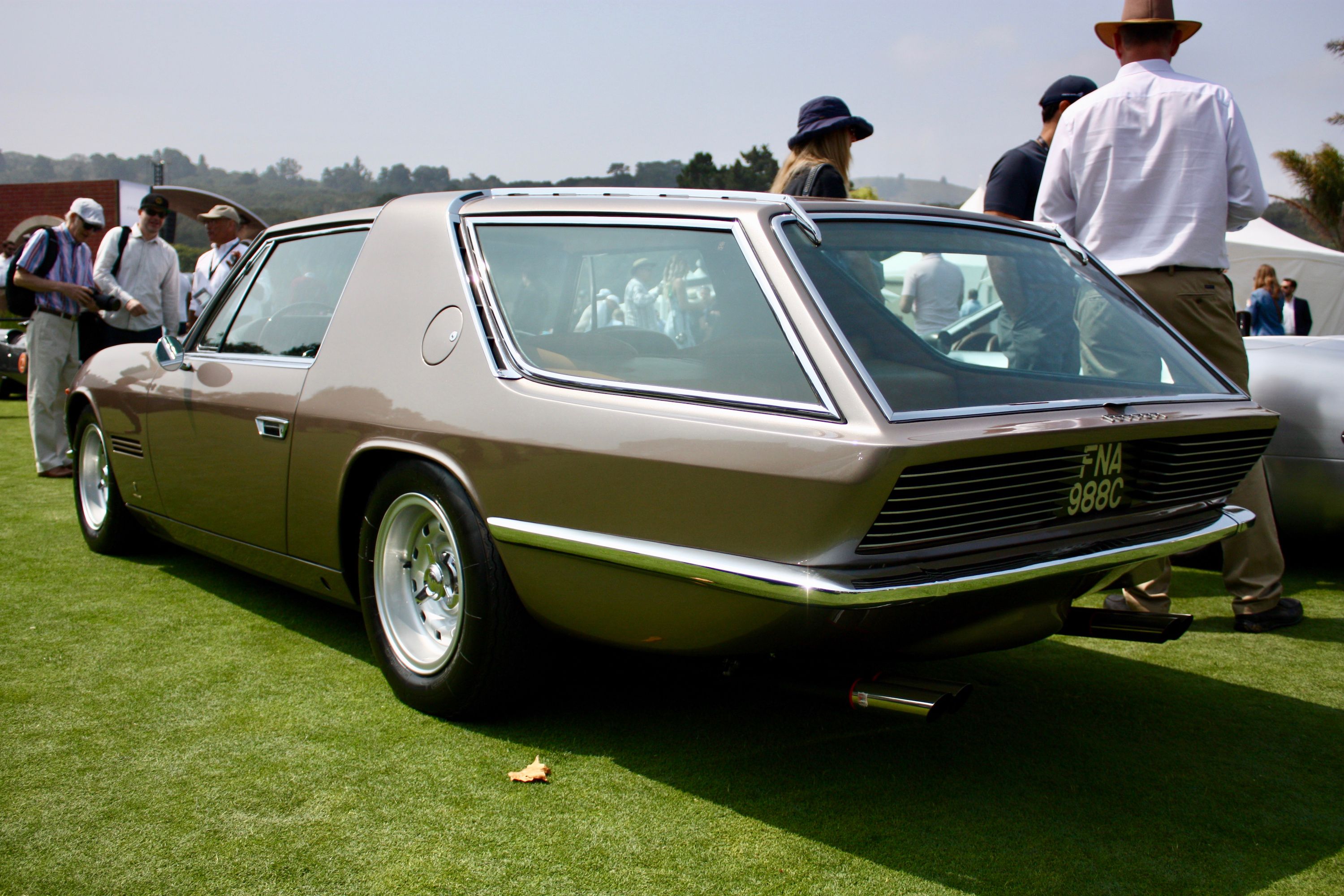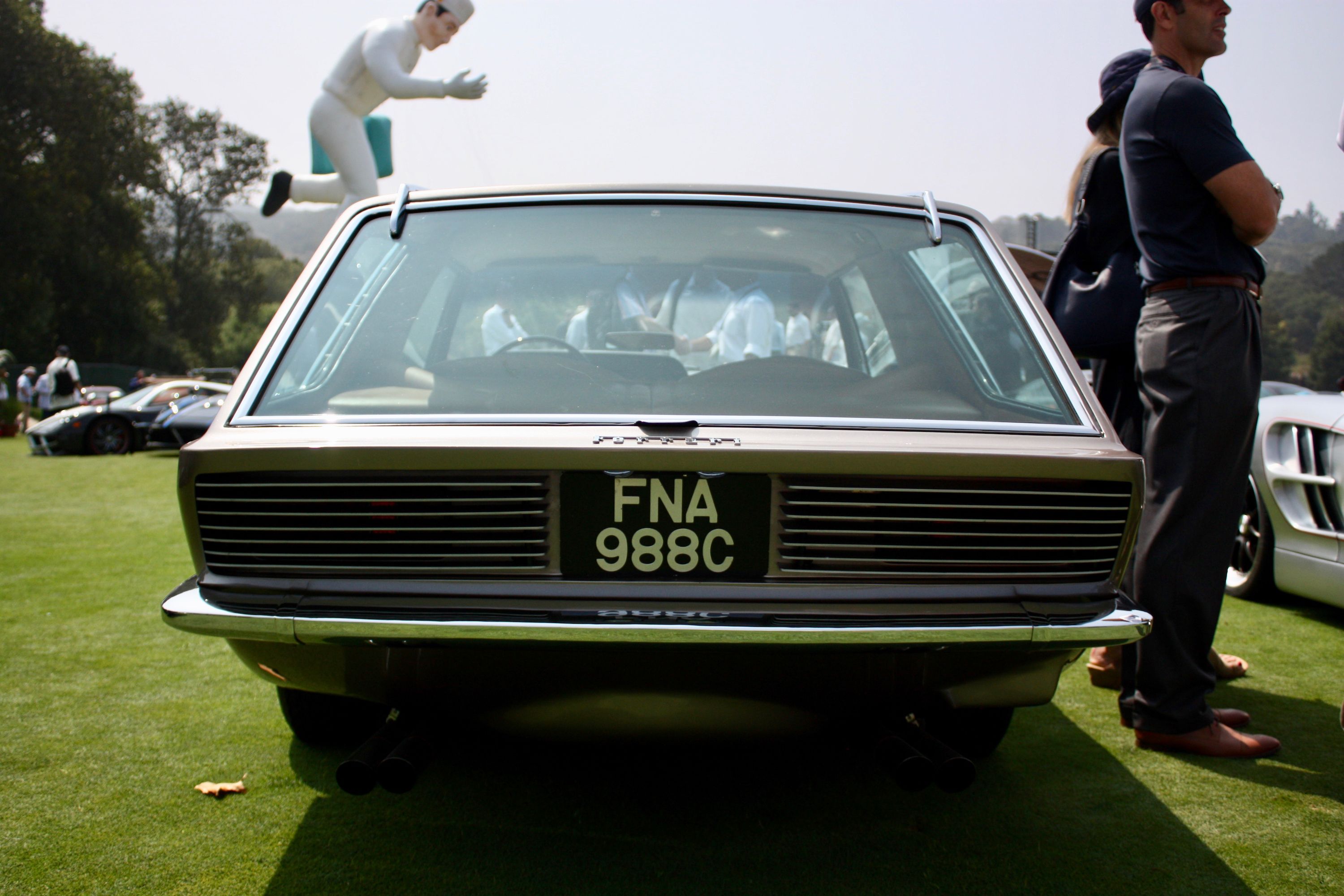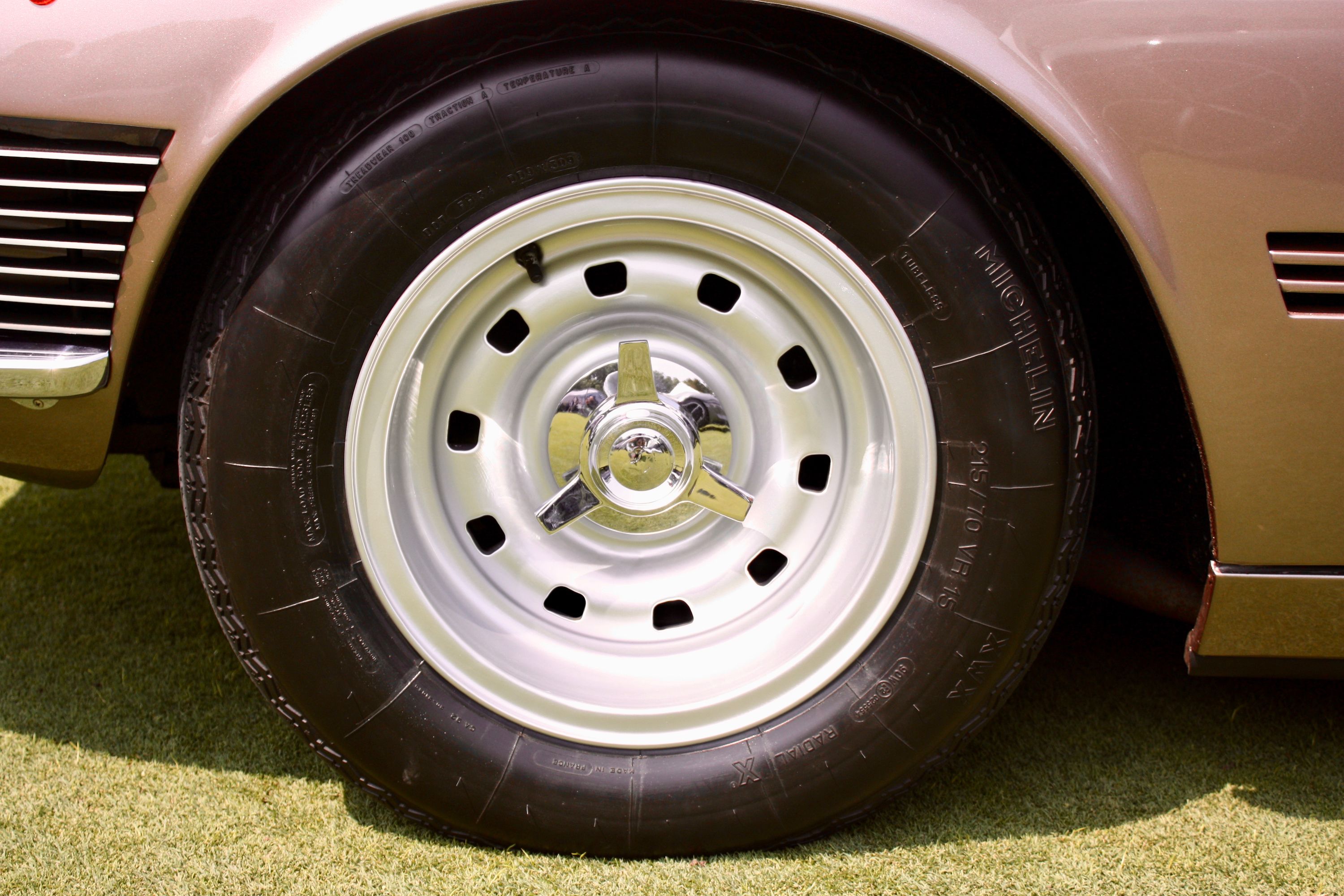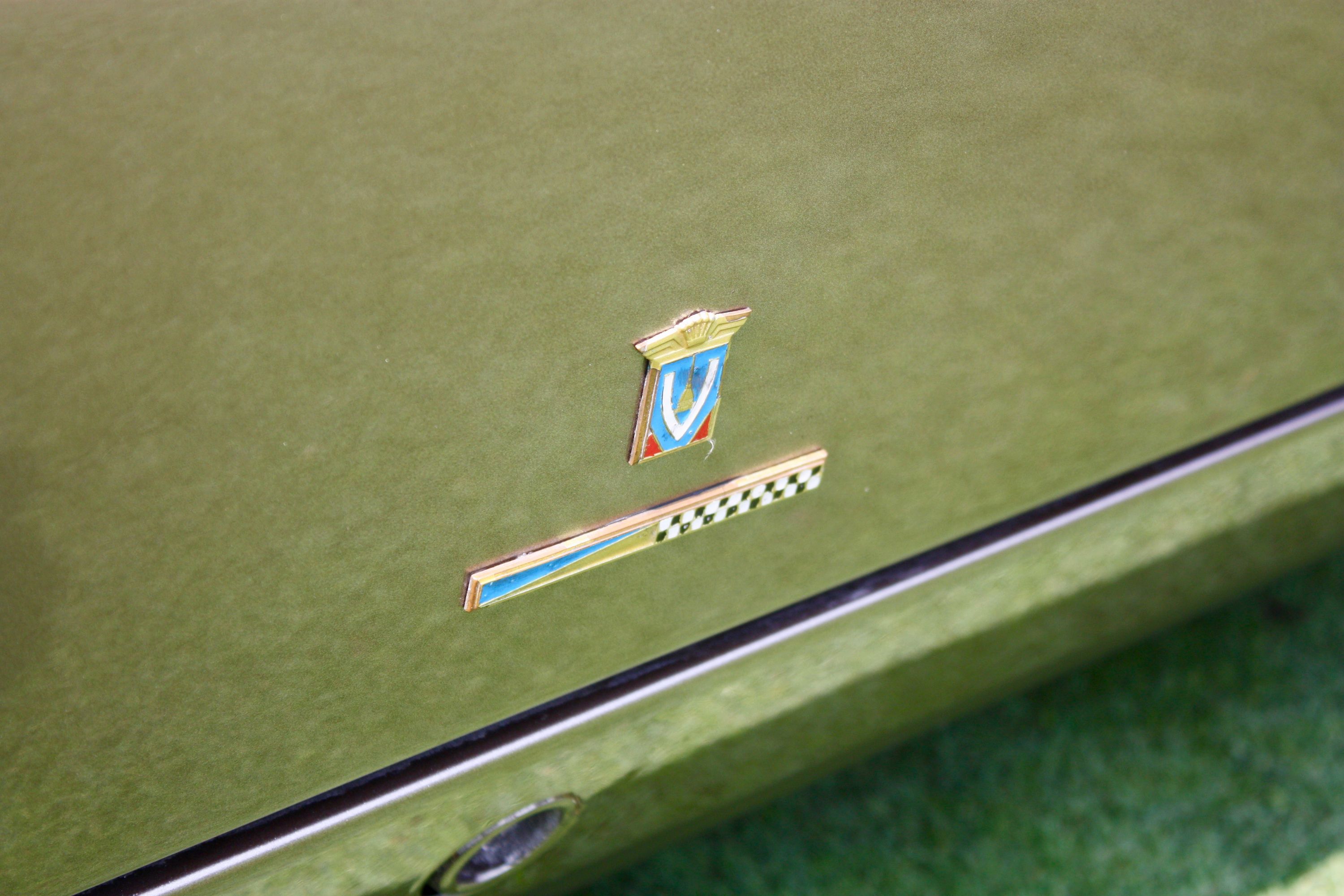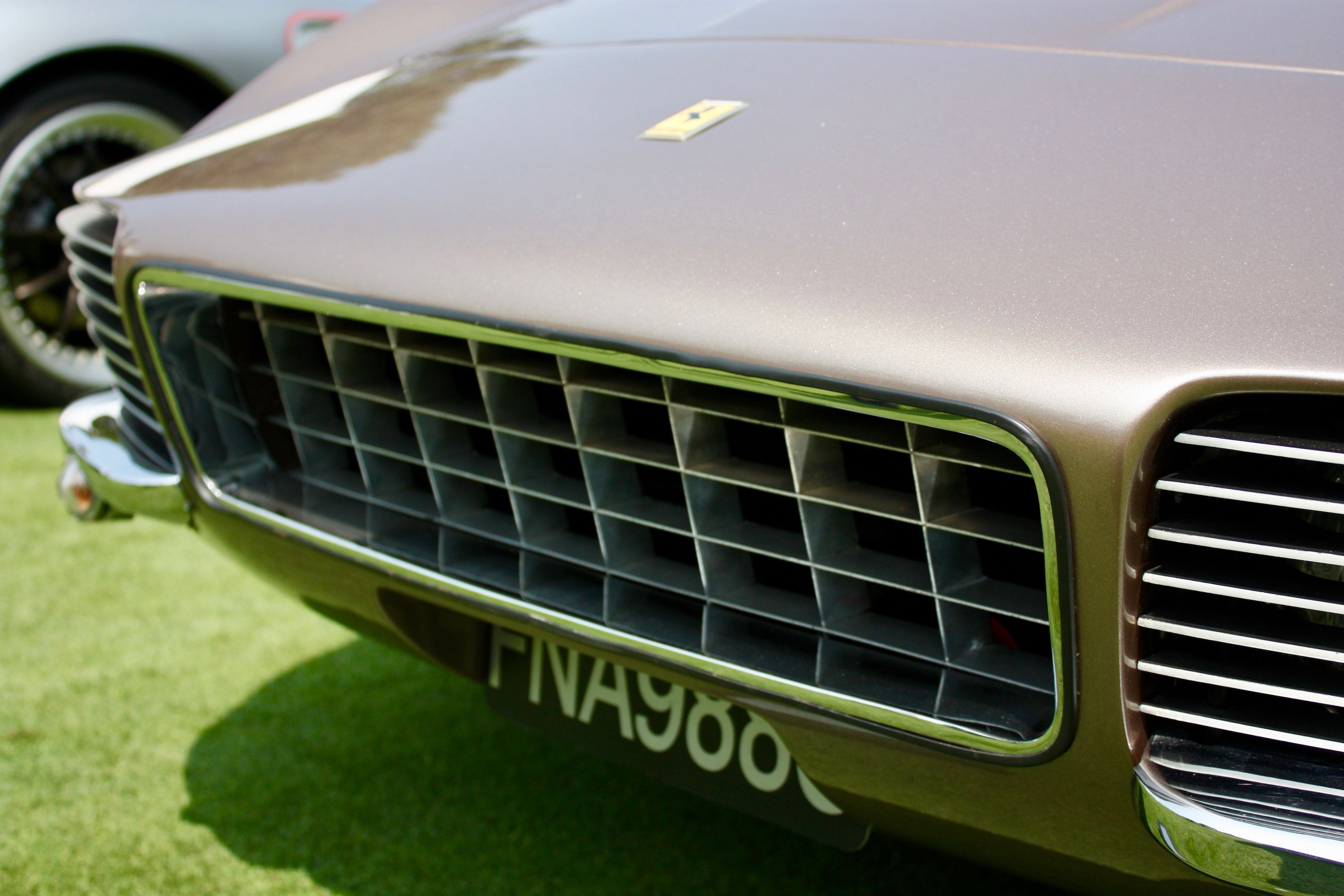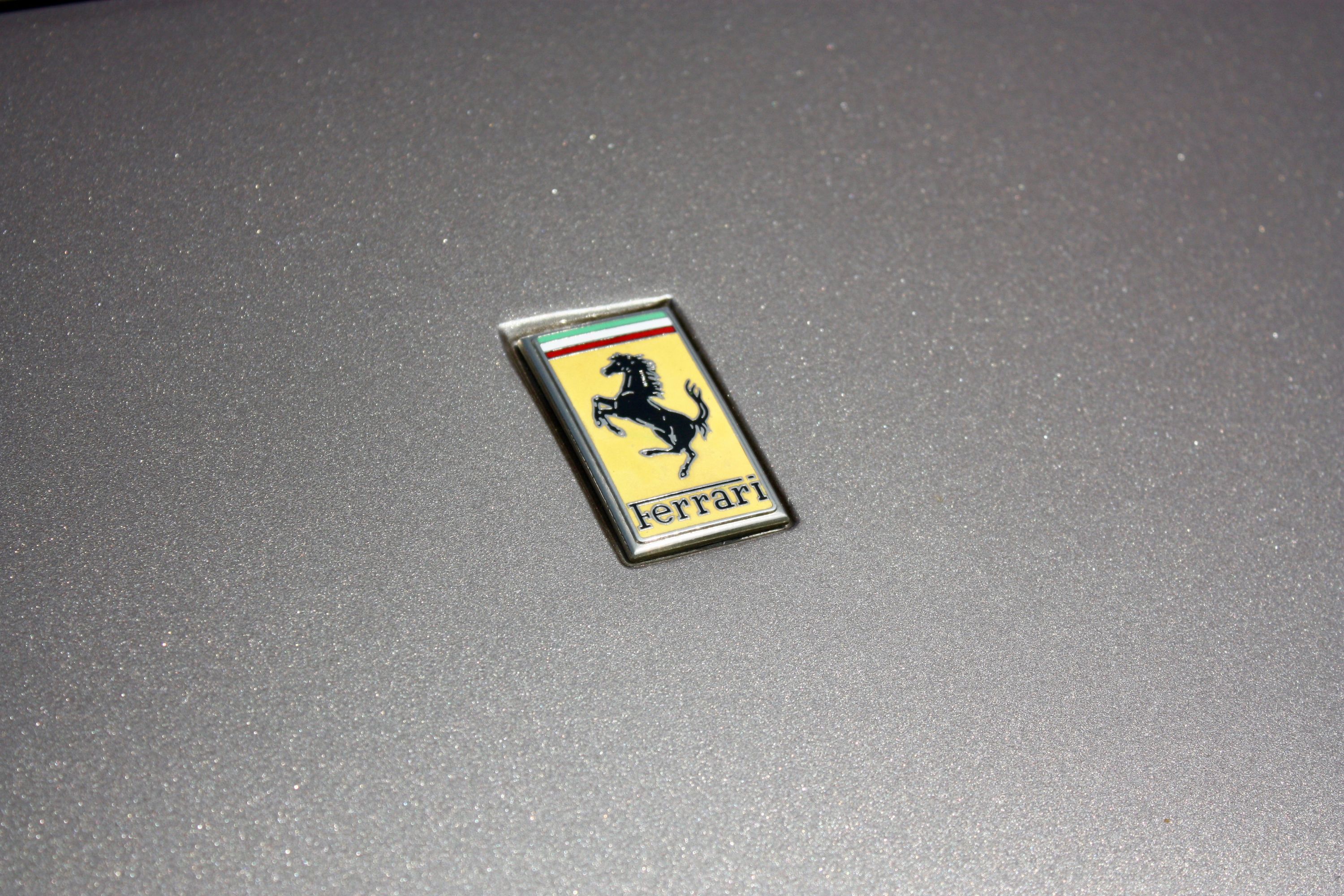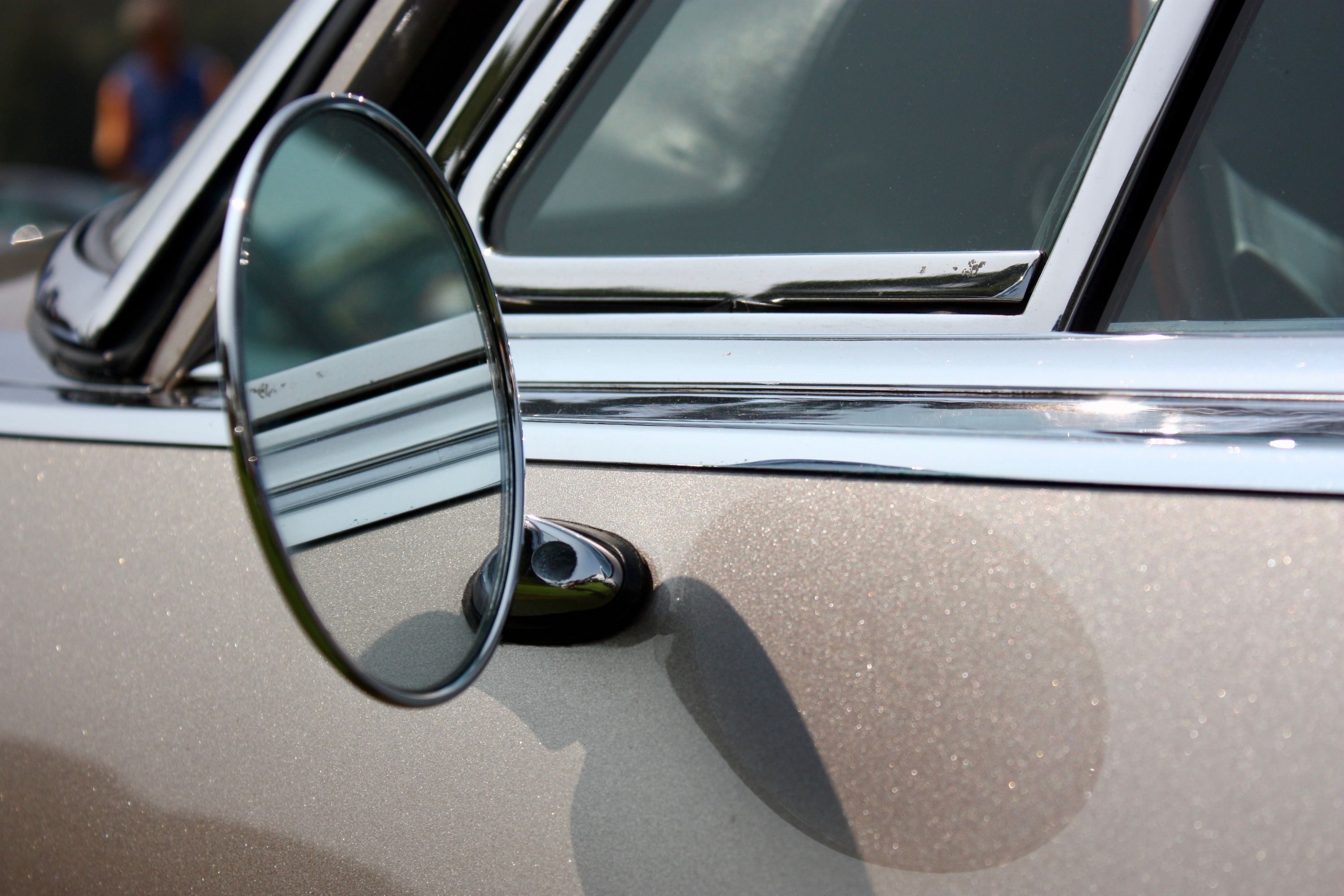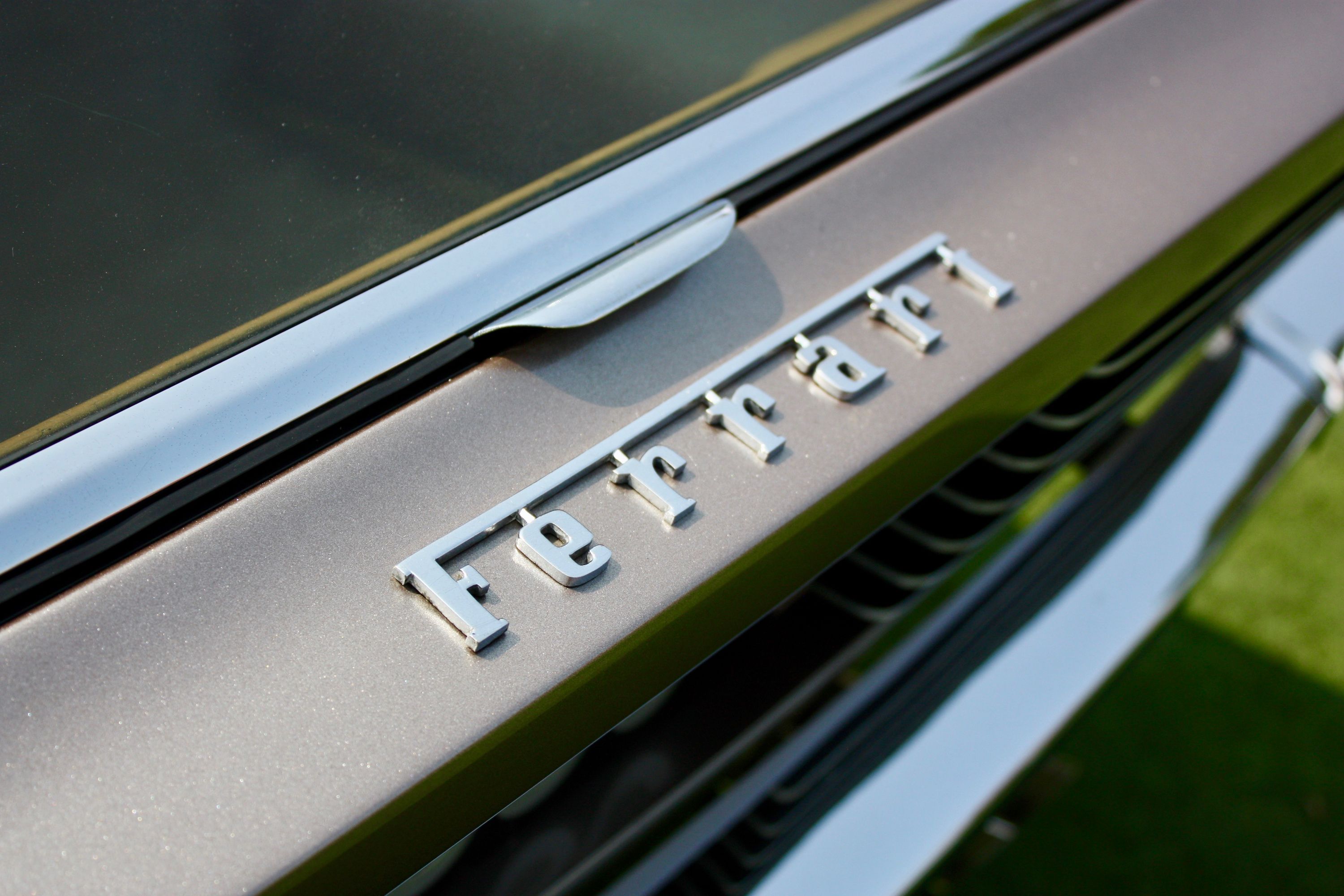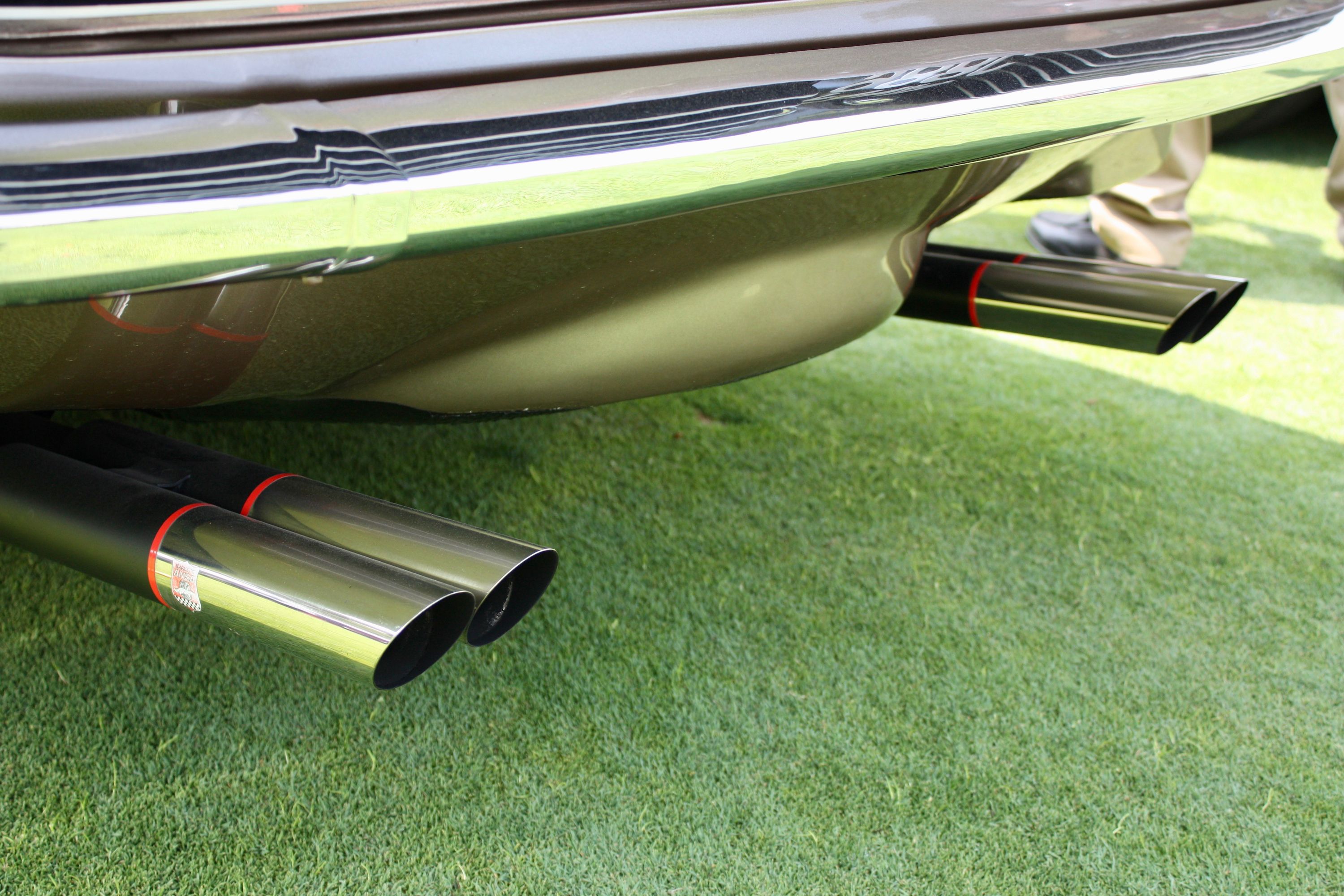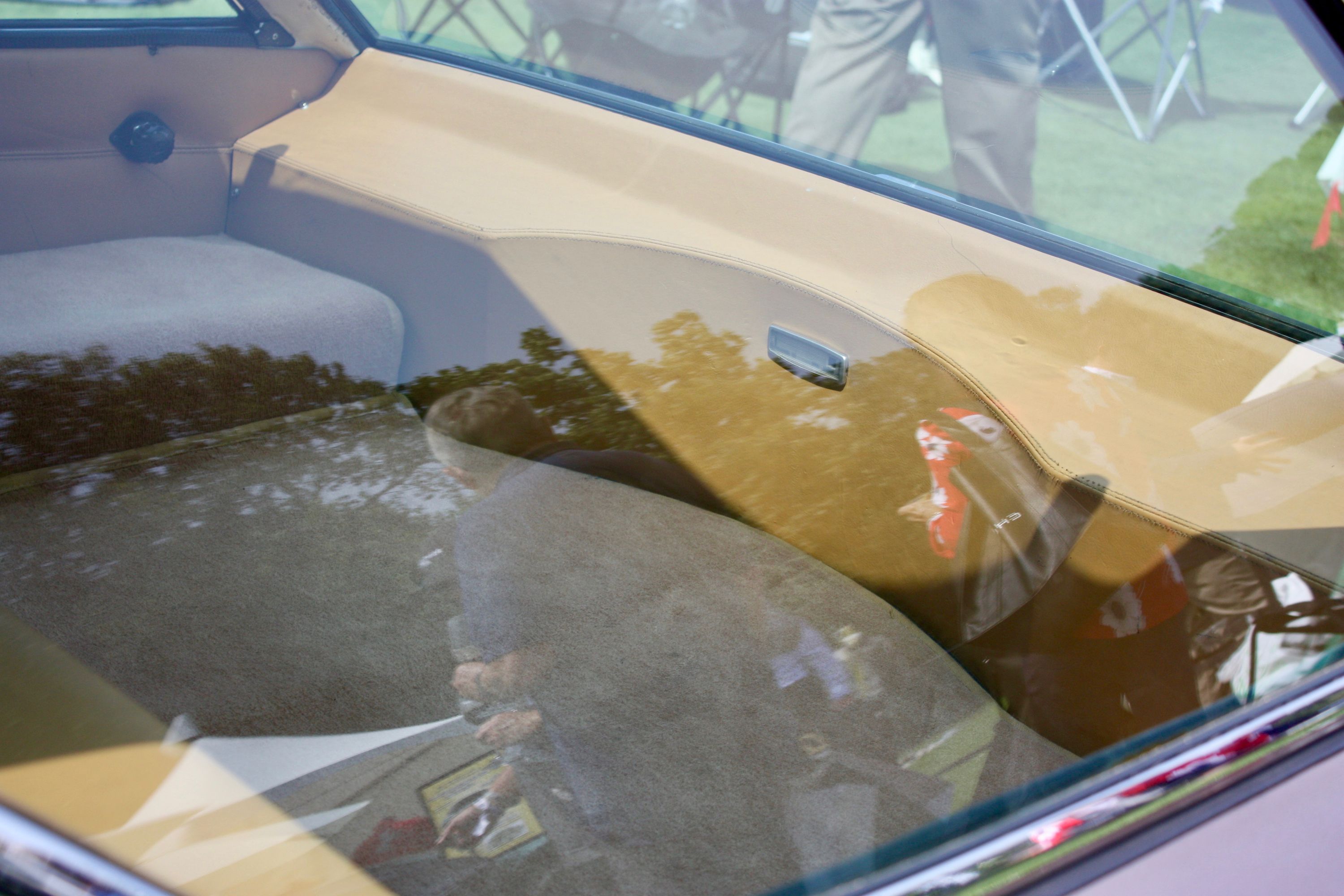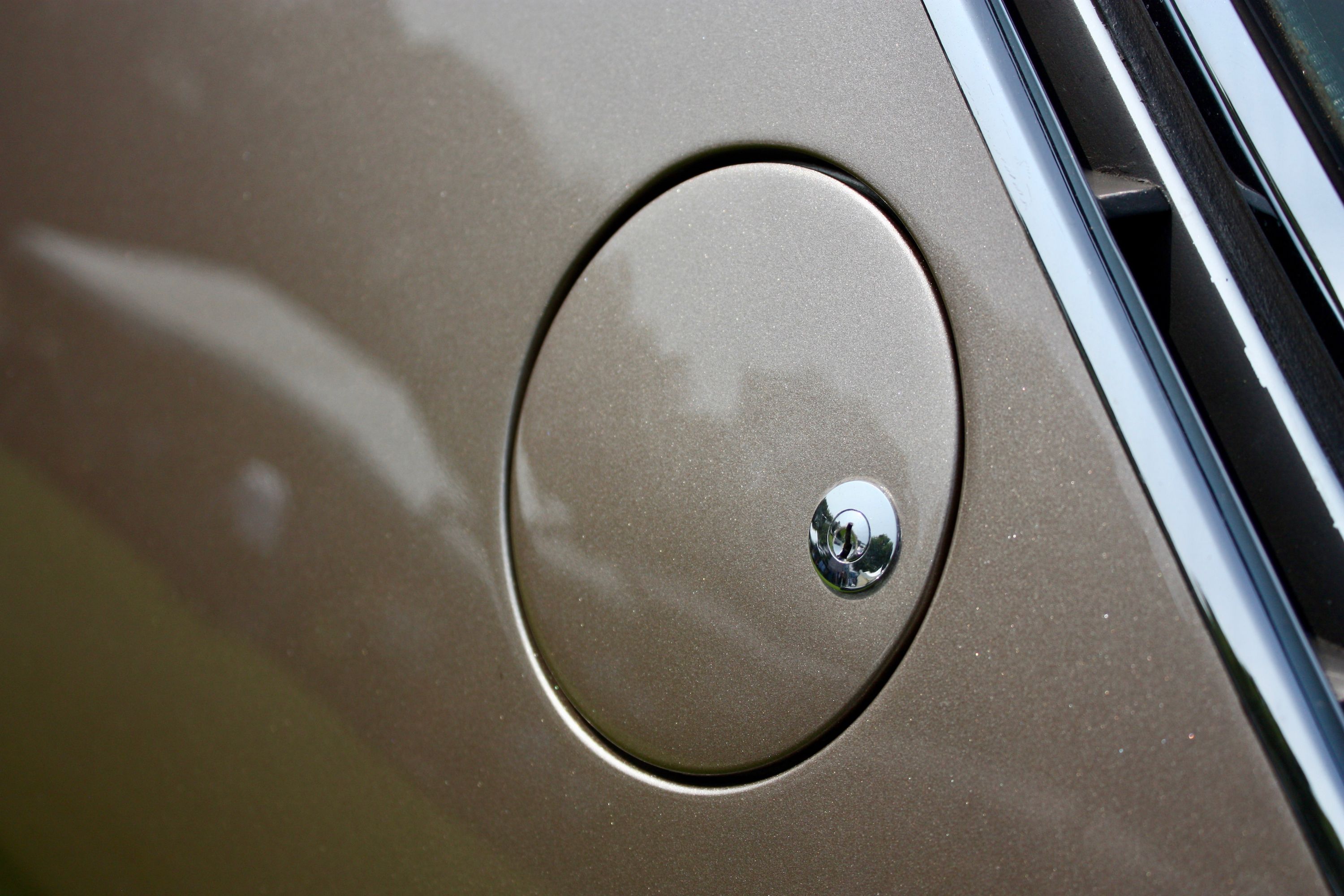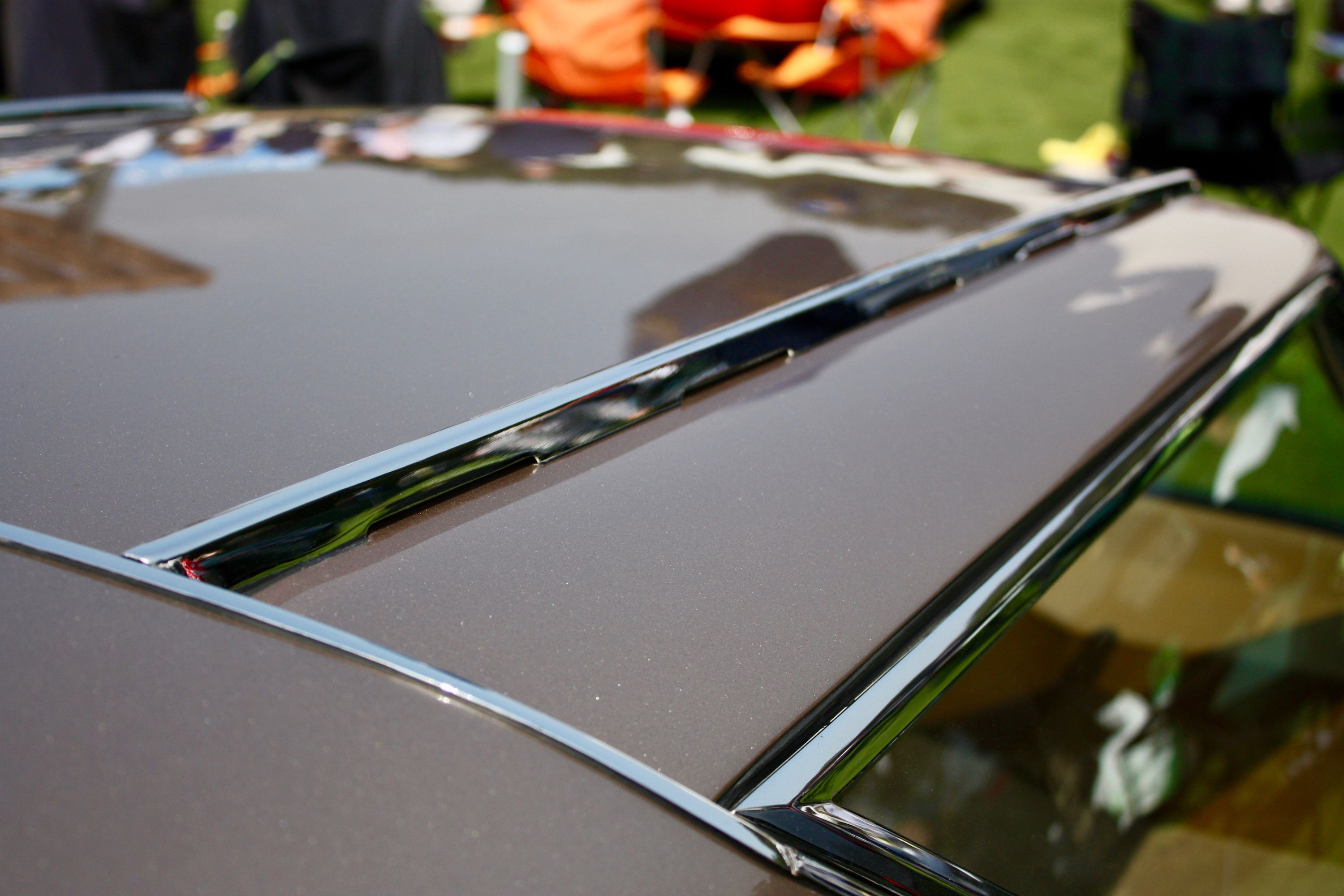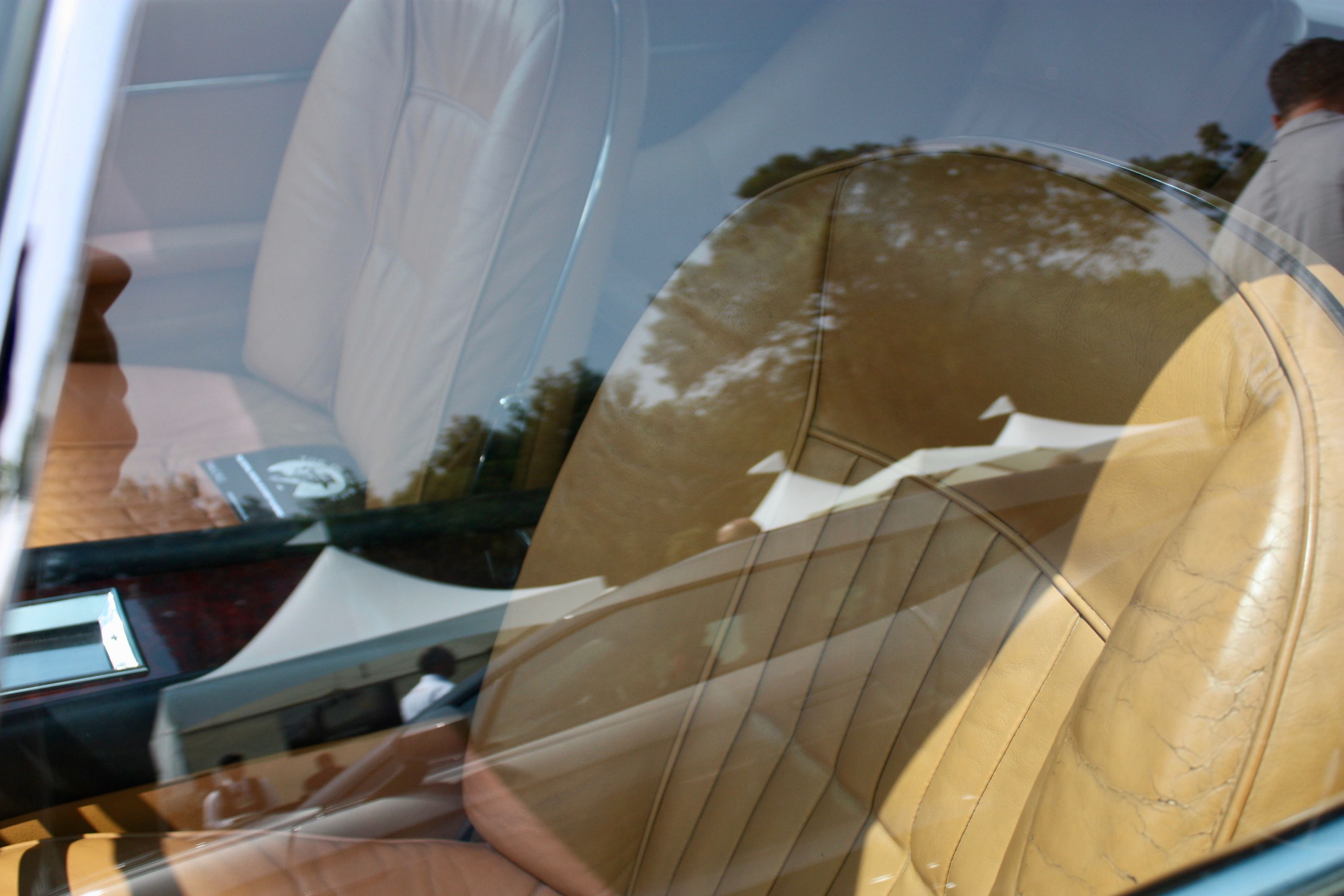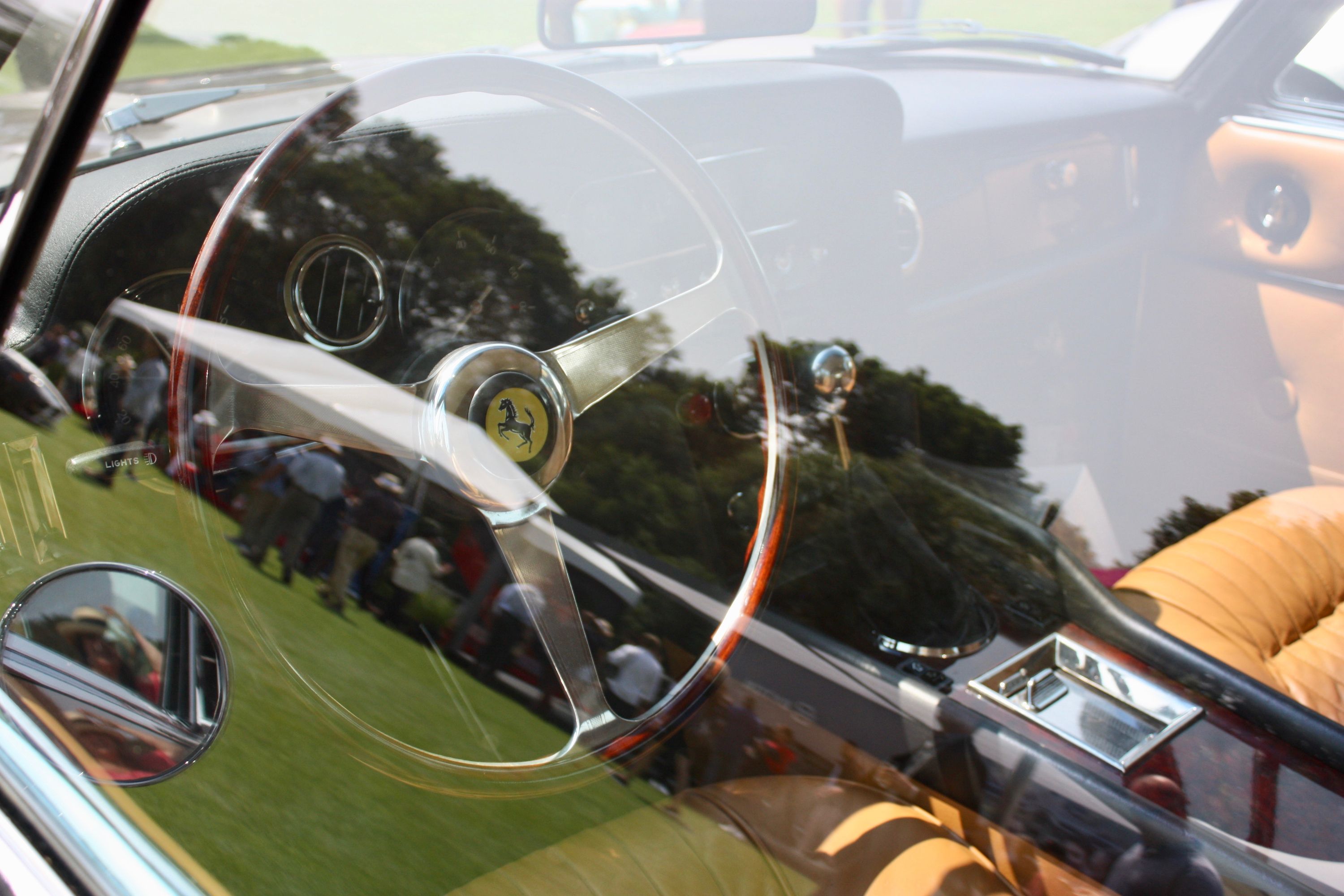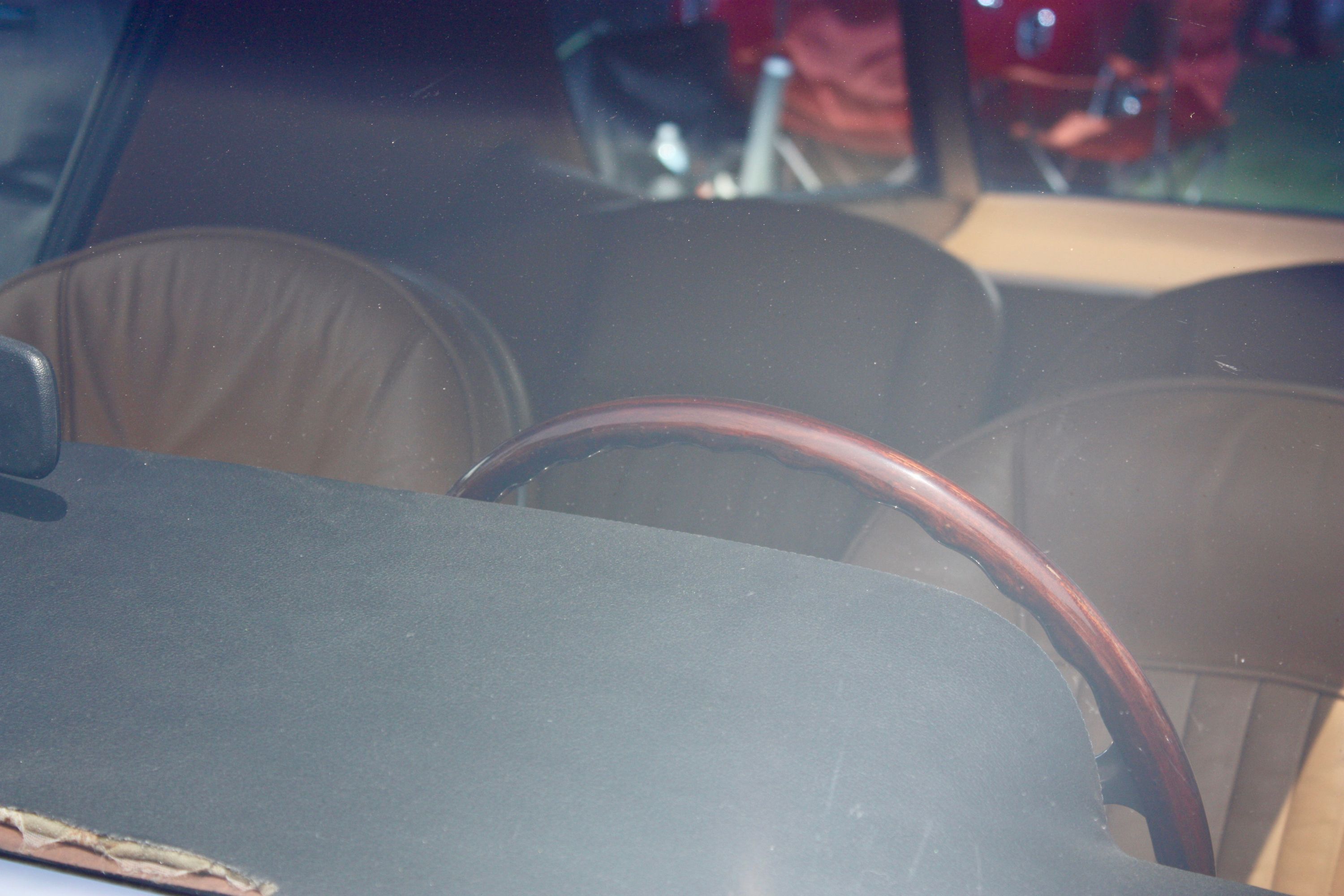The Ferrari 330 GT Shooting Brake by Vignale is as radical a departure from the production 330 GT 2+2 as one can imagine. It is a two-door station wagon Prancing Horse from the ‘60s that can sit four and reach 150 mph. You will not see another one like it, ever.
The ‘60s were an era when coachbuilding was still happening and it’s when many designers took it upon themselves to create unique reinterpretations of already outlandish sports cars. Such an outlandish reinterpretation was the Ferrari 330 GT Shooting Brake. It was based off of Ferrari’s then-new 330 GT 2+2, the Italian automaker’s fledging long-distance Grand Tourer that replaced the 250 GTE 2+2 and the 330 America in the lineup.
The bodywork you se now on the car, though, has nothing to do with the Tom Tjaarda-penned original coachwork. The shooting brake design was a joint effort between Luigi Chinetti, Jr. who acquired the car for this project and Bob Peak, the man commonly cited as being behind the way movie posters look nowadays.
Mechanically, chassis #09763 is broadly identical to any other 330 GT, but the clothes it wears are what sets it apart. The Vignale-built body, which has almost none of the components from the donor, is an acquired taste, which may be why the car’s been struggling to find a buyer for a few years now. It was once part of Jay Kay’s collection of Ferrari but has since seen the premises of many auction houses and dealers and is currently up for grabs again at The Petersen Automotive Museum auction on December 8th.
The asking price for what is, by all accounts, the last Ferrari to be bodied by Vignale – and one of the wackiest of the lot – is that of two Ferrari 488s full spec’ed out. Is it worth it? Read on to find out!
1965 Ferrari 330 GT Shooting Brake
- Make: Array
- Model: 1965 Ferrari 330 GT Shooting Brake
- [do not use] Vehicle Model: Array
Exterior
By the mid ‘60s, Ferrari’s range of 2+2 highway cruisers was getting quite antiquated. Their 250 GTE 2+2, a favorite of The Drake, looked like someone stole it from the past decade, so a refreshment was on order. Cue Tom Tjaarda, the man that went on to design the De Tomaso Pantera. He was working at the time at Pininfarina and was tasked with the design of the new 330 GT 2+2. What came the other end was a radical departure to the elegant look commonly associated with the 250 series.
A 1965 model was the base for Luigi Chinetti, Jr.’s ambitious Shooting Brake project. The car landed in his ownership in 1967 and was design with the aid of Bob Peak. The commercial artist and Chinetti, Jr. had met due to Peak’s interest in Ferraris of which he owned a few. The two thought it would be profitable to start a business and commission bespoke Ferraris for the wealthier-than-wealthy. The Shooting Brake was one of their first projects.
If featured extended overhangs at both ends and just about every panel was new. The nose was longer and sleeker with the headlights moved lower, inside the front end, behind louvers that go as far back as the front wheel arch.
More louvers cover the super-sized rectangular taillights which, in turn, are underline by the long rear bumper which extends around the rear corners of the car. It seems to want to punctuate just how much more car there is behind the rear wheels The luggage area is sizeable, at least when compared with the original car. The large windows in the back create what looks like a greenhouse, access being made through the sides which rise up like gullwing doors. The rear window also opens upwards which means you can really stuff the back of this Ferrari.
The construction of the car from Peak and Chinetti, Jr.’s plans was carried out by Carrozzeria Vignale which unveiled the finished product at the 50th Anniversary Turin Motor Show in 1968. Many people stopped and stared at the car, but nobody phoned Chinetti to order something in that vein. Merely 12 months later, Alfredo Vignale himself was dead in a road accident and Chinetti’s venture into building unique Ferraris never took off, although he worked again with Peak on a Ferrari 275P prototype as well as other designs.
Interior
The interior of this 330 GT has been preserved well over the years, with the original tan leather still in place. As a US-delivered car, it's left-hand drive with wood trim all over the dashboard and that classic three-spoke Ferrari steering wheel we've all come to know and love. Everything is where it should be in pure '60s analogue style, with four large knobs dominating the center console which is made complete by the presence of two air vents and a radio a bit below.
Drivetrain
For as much attention as the exterior of this car received, it’s almost incredible that the mechanical bit was left untouched.
The car, in its original configuration, is light by today’s standards weighing in at just 4,2300 pounds. It’s unknown, however, how much did the modifications add to the weight. An original 330 GT could reach a top speed of 150 mph with its five-speed manual gearbox, a change from the Series 1 which featured a four-speed overdrive transmission.
The car is equipped with independent suspension via unequal-length wishbones at the front and a live rear axle with twin radius arms at the back. Koni adjustable shock absorbers are there to improve road holding although, really, this isn’t meant to be hammered down a piece of tarmac – ever. Stopping power is by disc brakes at all four corners while the engine is being fed through three dual-throat Weber carburetors.
|
Engine |
|
|
Type |
front, longitudinal 60° V12 |
|
Bore/stroke |
77 x 71 mm |
|
Unitary displacement |
330.62 cc |
|
Total displacement |
3967.44 cc |
|
Compression ratio |
8.8 : 1 |
|
Maximum power |
221 kW (300 hp) at 6600 rpm |
|
Power per liter |
76 hp/l |
|
Maximum torque |
- |
|
Valve actuation |
single overhead camshaft per bank, two valves per cylinder |
|
Fuel feed |
three Weber 40 DCZ/6 carburettors |
|
Ignition |
single spark plug per cylinder, two coils |
|
Lubrication |
wet sump |
|
Clutch |
single-plate |
|
Chassis |
|
|
Frame |
tubular steel |
|
Front suspension |
independent, unequal-length wishbones, coil springs, telescopic shock absorbers, anti-roll bar |
|
Rear suspension |
live axle, twin radius arms, semi-elliptic springs, coil springs over telescopic shock absorbers |
|
Brakes |
discs |
|
Transmission |
4-speed + overdrive + reverse (5-speed from 1965 onwards) |
|
Steering |
worm and sector |
|
Fuel tank capacity |
90 liters |
|
Front tyres |
205 x 15 |
|
Rear tyres |
205 x 15 |
Prices
This car isn’t everyone’s cup of tea.
Since Jay Kay has tried to get rid of it, it has passed through a multitude of dealers and it even went from being green with a golden roof to being brown. COYS had it on offer, then it was on the auction block at both a Bonhams sale and a Gooding & Company sale. Their estimates ranged between $500,000 and $900,000, so you can expect that RM Sotheby’s, who have it listed with no reserve for their December 8th sale at The Petersen Museum, will look to earn about the same for it.
Competition
Read our full review on the 1966 - 1968 Lamborghini 400GT.1
It’s hard to find cars in the same vein as the 330 GT Shooting Brake, but the 400GT is just such a car. Unveiled by Carrozzeria Touring at the Turin Motor Show in 1966, it was built on the mechanicals of the 400GT as a celebration of the working relationship between Touring and Lamborghini. Just like your usual 400GT, it was powered by a 4.0-liter aluminum V12 which was mated to a five-speed gearbox.
Unlike the Ferrari, though, the Lamborghini was a much low-slung machine and it could just about fit two people and a modest amount of luggage. It was to be the last car completed by Carrozzeria Touring before it closed its doors and, thankfully, it survived to this day as a running and driving example. Less cutting-edge than the Chinetti/Peak design for sure.
Read our full review on the 1963 - 1967 Aston Martin DB5.
Read our full review on the 1964 - 1967 Ferrari 330 GT 2+2.1
The DB5, which will be re-made by Aston-Martin as part of an ultra-limited run of models, was quite popular with customers back in the mid ‘60s and, as David Brown would find out, there was a demand for a version with rather more space for luggage. The man who is behind the DB nameplate sought out to have his DB5 modified in order to fit his polo equipment, hunting gear and dogs. While Aston-Martin were able to convert his personal DB5 into a shooting brake, further orders for such conversions were met with a firm `No`.
As such, wealthy clients turned to Harold Radford which was a coachbuilding company already in tuned with morphing regular coupes into shooting brakes. Only 12 shooting brakes left Harold Radford’s company, making it the rarest DB5 version of them all. It is also the one with the poorest structural rigidity since much of the roof had to be cut out and replaced with a longer rear section made out of steel. The rear hatch opened upwards, being attached to the roof. With the seats folded, the rear area’s storage capacity rose to almost 39 cubic feet, but that would require some tentative driving since the suspension was untouched.
Read more Ferrari news.
Conclusion
This unique Ferrari 330 GT Shooting Brake is for the person who wants to stand out in a sea of rare Ferraris. Frankly, it’s surprising that the Sultan of Brunei hasn’t bought it yet given his interest in one-of-a-kind Ferraris. Above its polarizing looks, it is a design statement from a by-gone era when building cars on your own terms was possible with a bit more ease and less hassle from various regulations.
What’s guaranteed is that you won’t see another one like it and you’ll be able to say you’re more uncustomary than Jay Kay who pondered whether or not he’d “lost the plot” upon buying this car. That’s why it now barely has 8,100 miles on the odometer.
Further reading
Read our full review on the 1964 - 1967 Ferrari 330 GT 2+2.
Read more Ferrari news.

